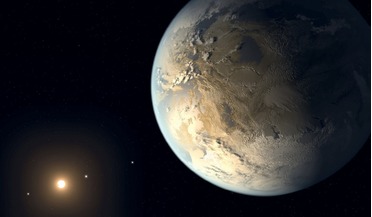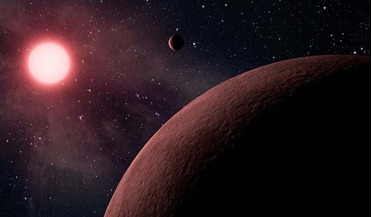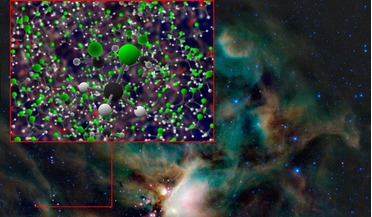 December 2014
MAVEN and the evolution of Mars
December 2014
MAVEN and the evolution of Mars
... distance and history, planet mass and size, and possibly planetary magnetic field, can greatly alter the fate of a terrestrial planet. The extrasolar planetary systems harbouring terrestrial planets that are now observed in ever greater numbers...
 February 2016
Is Jupiter Really Our Protective Shield?
February 2016
Is Jupiter Really Our Protective Shield?
...Jovian planet in a superior orbit is practically a necessity for the evolution of life on a terrestrial planet, claiming, ‘When planetary systems lack a Jovian planet to guard the outer boundary of the terrestrial planet region, the inner planets may...
 August 2018
Exoplanet census promises radical discoveries
August 2018
Exoplanet census promises radical discoveries
... extends outward. As a result, WFIRST is sensitive to analogues of all the solar system’s planets, except for Mercury, while Kepler has primarily studied planetary systems very different from our own. The sensitivity of the WFIRST microlensing survey...
 19 January 2016
Giant double-planet system around an evolved star detected by astronomers
19 January 2016
Giant double-planet system around an evolved star detected by astronomers
... both of the planets have nearly circular orbits, it is not known if the orbits of the planets are stable. Planetary systems with near circular orbits have better chances of survival because in these configurations, the bodies might interact...
 October 2015
Finding Earth-like worlds: the tale of how Kepler-452b was discovered
October 2015
Finding Earth-like worlds: the tale of how Kepler-452b was discovered
... how many planets there are, especially planets in these multiple systems. This tells us that nature loves to build planetary systems and that there are processes within these planetary systems that force the planets to migrate inwards. Many of these...
 02 October 2017
New molecule discovery may have implications for chemistry on Earth
02 October 2017
New molecule discovery may have implications for chemistry on Earth
.... It’s clear now that these molecules form readily in stellar nurseries, providing insights into the chemical evolution of planetary systems, including our own.” Indeed this may be the case as Fayolle and team found similar abundances of different...